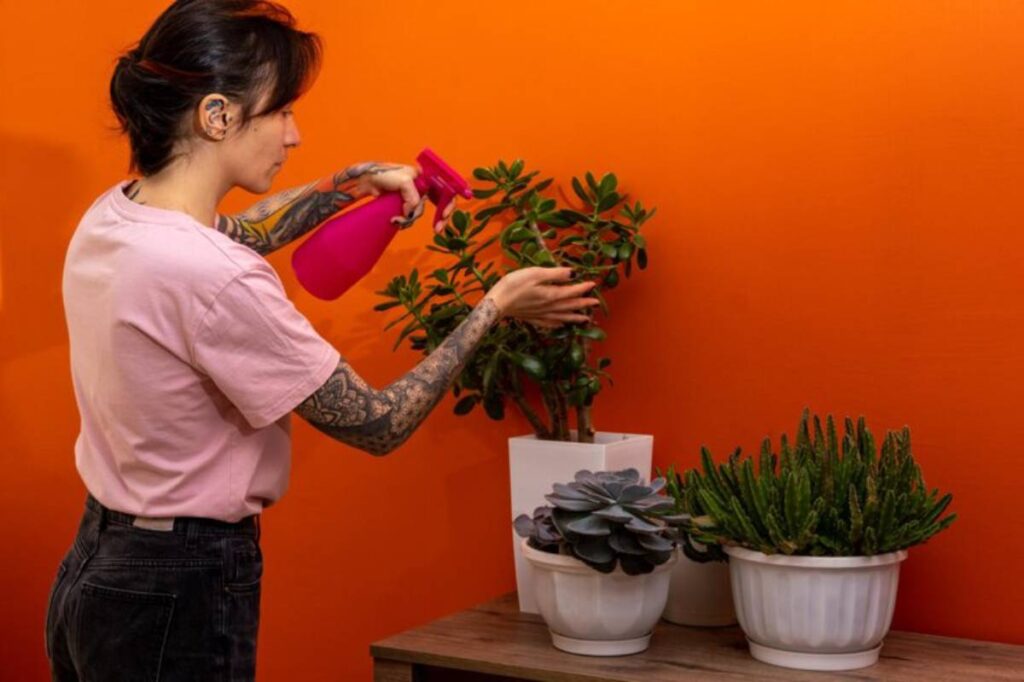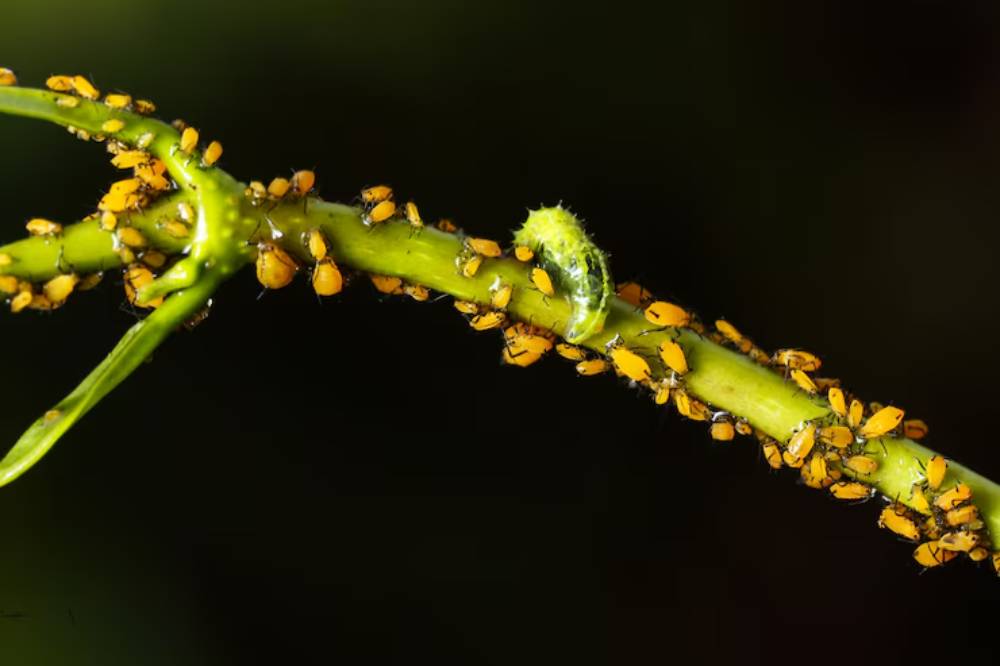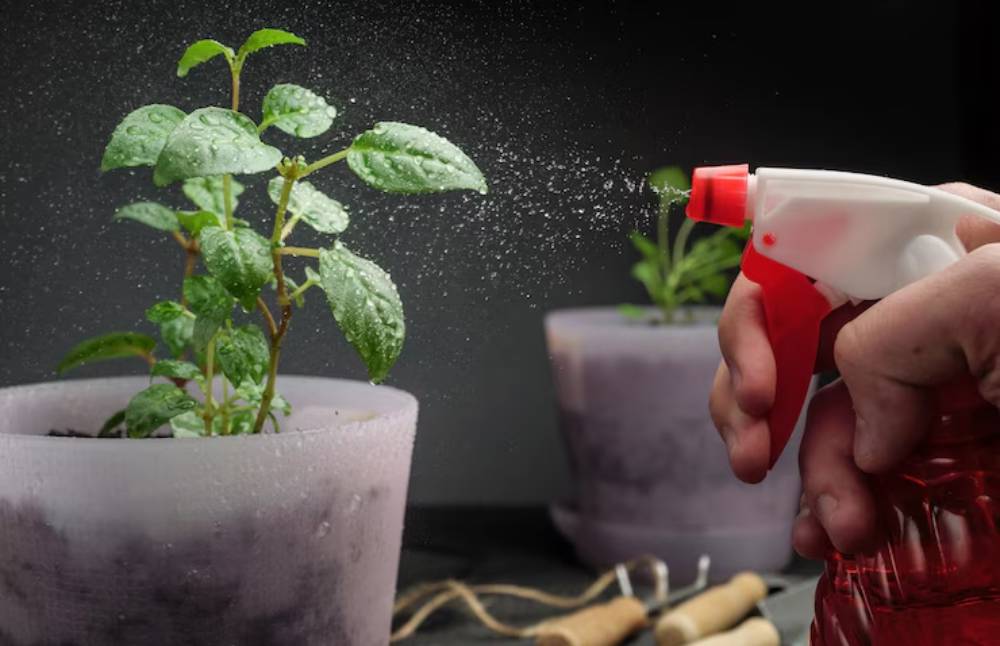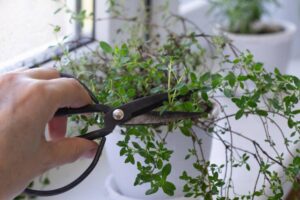The Interior Blog

How to Keep Your Indoor Plants Pest-Free and Vibrant
It’s a quiet Sunday morning. You’re watering your beloved indoor plants when you notice tiny white specks clinging to the underside of a leaf. Upon closer inspection, there’s movement. The horror sets in: your peaceful oasis has been invaded by pests.
If you’ve ever had to deal with indoor plant pests, you know how frustrating and discouraging it can be. Whether it’s sticky leaves from aphids or webbing from spider mites, pests can damage your plants and disrupt the beauty of your home. But before you give up or reach for harsh chemicals, take a breath — you’ve got options.
This guide walks you through everything you need to keep your houseplants healthy and pest-free using proven, practical, and organic methods. You’ll learn how to identify common indoor pests, treat them effectively, and prevent future infestations — all while keeping your space safe for kids, pets, and your own peace of mind.
Understanding common indoor plant pests
Not all bugs are bad, but some are unwelcome guests. Here are the most common culprits in houseplant invasions:
1. Aphids

- What they look like: Tiny green, black, or white bugs clustered on new growth.
- Damage caused: They suck sap from the plant, causing curling leaves and stunted growth.
- Signs: Sticky residue (honeydew) on leaves or surrounding surfaces.
2. Spider mites
- What they look like: Extremely small red or brown specks; often invisible to the naked eye.
- Damage caused: They pierce plant cells and feed on them, leaving pale or yellow spots.
- Signs: Fine webbing between leaves or stems.
3. Mealybugs
- What they look like: White, cottony clumps usually hiding at leaf joints or roots.
- Damage caused: Sap-sucking pests that weaken plants over time.
- Signs: Sticky leaves, slowed growth, and black sooty mould (from honeydew).
4. Fungus gnats
- What they look like: Small black flies buzzing around the soil surface.
- Damage caused: Adults are mostly annoying, but larvae can damage plant roots.
- Signs: Mushy roots, slow growth, and visible flying insects.
5. Scale insects
- What they look like: Small brown or black shell-like bumps on stems or leaves.
- Damage caused: Like aphids and mealybugs, they drain sap, weakening the plant.
- Signs: Discoloured or falling leaves, sticky residue.
Understanding who you’re dealing with is the first step in reclaiming control over your indoor garden.
How pests sneak into your indoor space
Even the cleanest home isn’t immune to pests.
Here’s how they typically arrive:
- New plants brought in without quarantine
- Contaminated potting soil or organic matter
- Open windows or being carried in by pets or clothing
- Shared tools or water trays
Always inspect new plants and isolate them for at least 10 days before placing them near your other greenery.
Organic pest solutions that actually work
Now that we’ve identified the most common pests, let’s explore the safe, effective, and environmentally friendly ways to deal with them.
1. Neem oil spray (your natural go-to)

Neem oil is a safe and powerful organic solution derived from the neem tree. It disrupts pest hormones, making it difficult for them to feed and reproduce.
- How to use: Mix 2 tsp of neem oil with 1 tsp of mild liquid soap in 1 litre of water. Spray on all surfaces of the plant, especially the undersides of leaves.
- Effective against: Spider mites, aphids, mealybugs, and scale.
2. Rubbing alcohol solution
A cost-effective and quick remedy, especially for mealybugs and scale.
- How to use: Mix equal parts rubbing alcohol and water. Dab directly onto pests with a cotton bud or spray lightly.
- Caution: Test a small area first; some sensitive plants can react.
3. Insecticidal soap
An easy DIY or store-bought option that suffocates soft-bodied pests.
- How to use: Mix 1 tsp of Castile soap in 1 litre of water. Spray directly on affected areas.
- Effective against: Aphids, spider mites, and mealybugs.
4. Cinnamon powder (for fungus gnats)
A natural antifungal that stops gnat larvae from developing.
- How to use: Sprinkle cinnamon on the soil surface. Reapply every few days.
- Bonus: Pleasant smell with no side effects for your plants.
5. Sticky traps
Bright yellow or blue traps lure and catch flying pests like fungus gnats.
- Placement: Near plant bases or hung from stems.
- Effective for: Monitoring and reducing adult populations.
Practical prevention strategies for healthy plant care
Dealing with pests once is one thing. But how do you stop them from returning?
1. Don’t overwater

Most pests thrive in moist, stagnant environments. Letting your soil dry out between waterings discourages fungus gnats and root rot.
2. Clean your tools and pots
Always disinfect pruners, trowels, and reused pots with a mild bleach solution or white vinegar.
3. Improve air circulation
Crowded plants with poor airflow are prime targets for mites and mould. Space your plants out and occasionally rotate them.
4. Check new additions
Always quarantine new plants for 7–10 days. Inspect them daily under bright light to catch pests early.
5. Maintain routine plant hygiene
Wipe down leaves with a damp cloth or diluted neem solution weekly. It keeps your plants dust-free and pest-resistant.
For more on plant cleanliness, our guide on how to clean and dust your indoor plants properly offers a full step-by-step breakdown.
Safe pest control for homes with kids and pets
If you share your space with little humans or furry friends, safety becomes even more crucial.
- Avoid synthetic insecticides. Many are toxic when ingested or inhaled.
- Use neem and insecticidal soap — both are non-toxic to pets and children when used properly.
- Avoid diatomaceous earth indoors — though effective, the dust can irritate lungs.
You might also want to consider decorating with the top 10 indoor plants safe for cats, dogs, and kids to reduce the risk of accidental ingestion.
When to call in the experts
If pests keep coming back despite your best efforts, or if an infestation has spread to most of your plants, it may be time to consult a professional indoor plant service or horticulturist.
They can:
- Identify hard-to-spot pests
- Offer stronger (yet still safe) treatments
- Rescue severely damaged plants through proper repotting and pruning
Don’t feel discouraged. Even plant lovers with years of experience need expert help sometimes — it’s part of the journey.
Common mistakes that make pest problems worse
Here are some well-meaning actions that might be doing more harm than good:
- Using harsh chemicals indoors – Damaging to your health and your plants.
- Over-saturating the soil after spotting pests – Leads to root issues and fungal outbreaks.
- Ignoring early signs – A few mealybugs today can become hundreds by next week.
- Skipping quarantine for new plants – It’s tempting, but dangerous.
- Leaving dead leaves on the soil – This attracts pests and promotes decay.
Staying aware of these missteps helps you act from a place of confidence, not panic.
Conclusion: Vibrant, pest-free plants are within reach
Indoor plants bring peace, beauty, and fresh air into your home — and with a bit of knowledge and consistency, pests don’t have to threaten that joy. By identifying problems early, using safe and effective organic solutions, and committing to a simple routine, you’ll create a home where your plants (and you) can thrive.
You don’t need a chemistry degree or endless free time to succeed at healthy plant care. All you need is a clear plan, a bit of observation, and the right tools at hand.
Ready to take back control of your indoor jungle? Start with a quick inspection of your plants today and try one of the remedies above. If you’ve got a tip or pest story to share, leave a comment below — let’s learn from each other and grow together.









